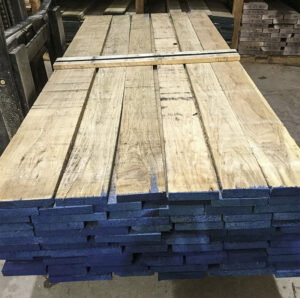/ˈwɔːlnʌt/
Unveiling the Timeless Elegance of Walnut Wood: A Journey Through Its Varieties and Symbolism
In the realm of woodworking, there are few materials that exude the same elegance, luxury, and timeless beauty as walnut wood. Derived from the trees of the Juglans Genus, this exquisite wood boasts a stunning array of deep and rich colours, ranging from chocolatey browns to golden hues, making it a favourite among artisans and craftsmen for centuries. Yet, walnut wood holds more than just captivating aesthetics. Join us on a journey as we delve into the captivating world of walnut wood, exploring its varieties, symbolism, and the intricate tales it weaves.

A luscious walnut nut delicately rests upon a backdrop of exquisite walnut wood, a harmonious tribute to the very tree from which this rich and cherished material originates.
A Symphony of Colours and Textures
Walnut wood, with its enchanting hues and textures, has been a cornerstone of fine craftsmanship throughout history. From exquisite furniture pieces to delicate carvings and even musical instruments, its diverse applications stem from its unique characteristics. The grain of walnut wood is renowned for its straight and easy-to-work-with nature, making it a dream material for artisans seeking to shape their creations with precision. The wood’s inherent density and hardness further enhance its appeal, enabling it to withstand the test of time.
Delving into the walnut family unveils an enchanting tapestry of variety, each type possessing distinct attributes that add depth to its allure. Among the prominent walnut species are:

Within my work I use different types of walnut, this is an example of my Walnut bangles which utilises European Walnut.
English/European Walnut: Celebrated for its light colour and subtle traces of purples and greys, English walnut wood is a staple in fine veneers, furniture, and decorative objects. Its unique shock resistance and moderate durability have made it a favoured choice for internal applications.
Black Walnut: Often referred to as the “black gold” of woods, black walnut stands out with its deep chocolate colouring, strength, and durability. A premium hardwood, it’s beloved by woodworkers for its ease of workability and finishes beautifully, finding its place in a plethora of creations, from furniture to artistic pieces.
Claro Walnut: Resilient and distinct, Claro walnut is valued for its durability and resistance to decay. Its exceptional grain, colour, and markings make it a prized possession in the woodworking realm. It may require additional skill to work with, especially when the grain is figured or irregular.
White Walnut (Butternut): Offering a lighter and more delicate aesthetic, white walnut’s pale gold tones and lightweight nature make it a versatile option. Used in carvings, veneers, and interior trims, its shock resistance and dimensional ability are noteworthy features.
Bastogne Walnut: A product of innovation, Bastogne walnut is a cross between Claro walnut and English walnut. It boasts a unique growth rate and finds its place in fine furniture, musical instruments, and turned objects.
Peruvian Walnut: Despite its misleading name, Peruvian walnut hails from Central and northern South America. With its dark colour and coarser grain, it’s highly regarded for its use in high-end furniture and gunstocks.
Beyond Aesthetics: The Symbolic Connection
Walnut wood carries a symbolic weight that extends beyond its physical attributes. Throughout history, walnuts have been associated with wisdom, knowledge, intelligence, and inspiration. The rich heritage of the walnut tree’s symbolism is a testament to its deep-rooted connection with human intellect and aspiration.
Just a quick google will show that there is an abundance of symbolic meaning attached to this wood, which adds to the wonderful qualities this wood contributes to its pieces. Just as artisans mold and shape walnut wood into exquisite creations, the material itself can serve as a talisman for wearers of walnut jewellery. The various intricate meanings associated with walnut wood add a layer of significance to these adornments, empowering the wearer to navigate challenging times with discernment and clarity.

A close up of the ‘Belle’ Necklace, deep chocolatey brown walnut paired with a deep ruby red Padauk and Brass.
Preserving Craftsmanship in the Modern Era
In a world captivated by technology and rapid innovation, the artistry of woodworking continues to thrive, preserving centuries-old traditions and craftsmanship. Walnut wood, with its unparalleled elegance and timeless appeal, exemplifies the marriage of history and contemporary design.
As we celebrate the legacy of walnut wood, we invite you to explore the unique qualities and stories behind each variety. The world of woodworking is a treasure trove of hidden narratives and craftsmanship, waiting to be discovered and cherished. Join us in our upcoming blog within this series as we delve into the captivating realm of ebony wood, unveiling its enchanting qualities and the artistry it inspires.
Intrigued? Stay tuned for our next piece, where we explore the allure of ebony wood and its profound influence on the world of craftsmanship. Until then, may the elegance of walnut wood inspire your journey into the realm of artisanal beauty.


